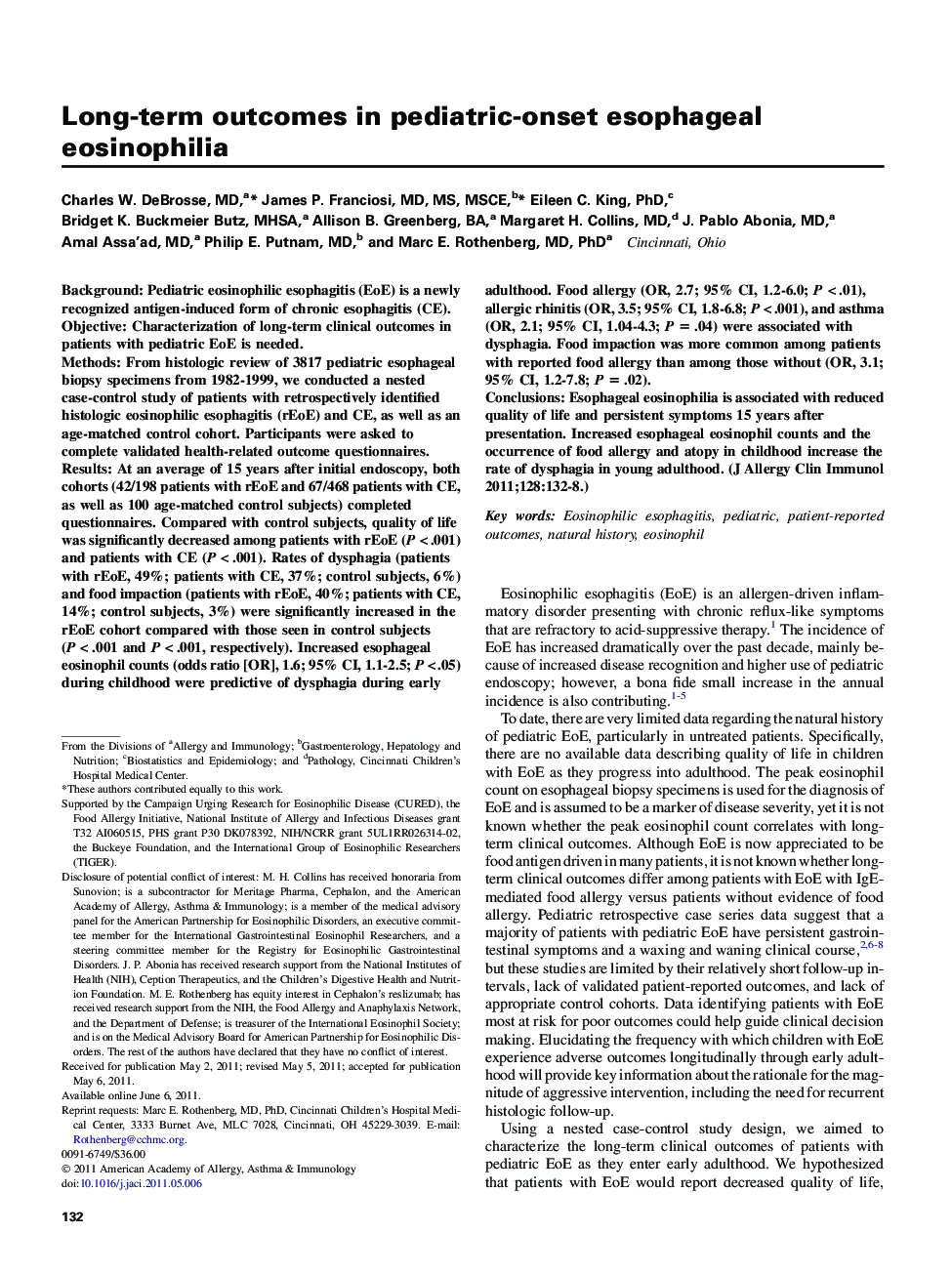| Article ID | Journal | Published Year | Pages | File Type |
|---|---|---|---|---|
| 3199689 | Journal of Allergy and Clinical Immunology | 2011 | 7 Pages |
BackgroundPediatric eosinophilic esophagitis (EoE) is a newly recognized antigen-induced form of chronic esophagitis (CE).ObjectiveCharacterization of long-term clinical outcomes in patients with pediatric EoE is needed.MethodsFrom histologic review of 3817 pediatric esophageal biopsy specimens from 1982-1999, we conducted a nested case-control study of patients with retrospectively identified histologic eosinophilic esophagitis (rEoE) and CE, as well as an age-matched control cohort. Participants were asked to complete validated health-related outcome questionnaires.ResultsAt an average of 15 years after initial endoscopy, both cohorts (42/198 patients with rEoE and 67/468 patients with CE, as well as 100 age-matched control subjects) completed questionnaires. Compared with control subjects, quality of life was significantly decreased among patients with rEoE (P < .001) and patients with CE (P < .001). Rates of dysphagia (patients with rEoE, 49%; patients with CE, 37%; control subjects, 6%) and food impaction (patients with rEoE, 40%; patients with CE, 14%; control subjects, 3%) were significantly increased in the rEoE cohort compared with those seen in control subjects (P < .001 and P < .001, respectively). Increased esophageal eosinophil counts (odds ratio [OR], 1.6; 95% CI, 1.1-2.5; P < .05) during childhood were predictive of dysphagia during early adulthood. Food allergy (OR, 2.7; 95% CI, 1.2-6.0; P < .01), allergic rhinitis (OR, 3.5; 95% CI, 1.8-6.8; P < .001), and asthma (OR, 2.1; 95% CI, 1.04-4.3; P = .04) were associated with dysphagia. Food impaction was more common among patients with reported food allergy than among those without (OR, 3.1; 95% CI, 1.2-7.8; P = .02).ConclusionsEsophageal eosinophilia is associated with reduced quality of life and persistent symptoms 15 years after presentation. Increased esophageal eosinophil counts and the occurrence of food allergy and atopy in childhood increase the rate of dysphagia in young adulthood.
